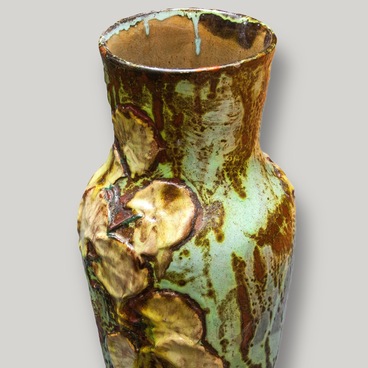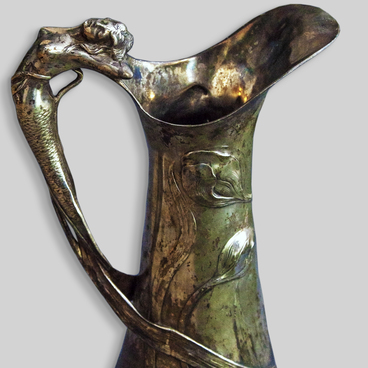Small tin jewelry casting molds stored in the Tobolsk Provincial Museum are made of clay and wood, presumably by the Uryevskiye Yurty masters. The Khanty often used the bark of ordinary poplar or black poplar, pine bark, soft black stone, and clay boiled in fat. A simple deepened pattern with straight lines on such casting molds was cut out with an ordinary knife, and if the pattern was to be made in the form of a circle, then a compass made of elk bone was used. The casting molds were made small in length from 6 to 8 centimeters.
One of the casting molds presented in the museum is flat, double-sided, and irregular. It is made of clay boiled in fat. On one side, the master cut out a pattern for a round casting, with the pattern for casting with four small circles on the other side. From the pattern to the edge, the master cut a special groove to pour molten metal into the mold. Most often it was tin. The casting mold came to the museum in 1897 from the provincial agronomist and museum curator Nikolay Skalozubov who actively took care of replenishing the funds and presenting them at all-Russian and international exhibitions.
Another casting molds was transferred to the museum in 1911 from the Organizing Bureau at the Tobolsk Provincial Committee of the First West Siberian Exhibition where it was presented. It is also double-sided and is designed for casting pewter jewelry. The master cut it out of wood and cut a pattern consisting of eight small circles on both sides. This casting mold also provides a groove for feeding molten metal.
In the travelogue ‘From Tobolsk to Obdorsk’, the provincial agronomist Nikolay Skalozubov wrote:
One of the casting molds presented in the museum is flat, double-sided, and irregular. It is made of clay boiled in fat. On one side, the master cut out a pattern for a round casting, with the pattern for casting with four small circles on the other side. From the pattern to the edge, the master cut a special groove to pour molten metal into the mold. Most often it was tin. The casting mold came to the museum in 1897 from the provincial agronomist and museum curator Nikolay Skalozubov who actively took care of replenishing the funds and presenting them at all-Russian and international exhibitions.
Another casting molds was transferred to the museum in 1911 from the Organizing Bureau at the Tobolsk Provincial Committee of the First West Siberian Exhibition where it was presented. It is also double-sided and is designed for casting pewter jewelry. The master cut it out of wood and cut a pattern consisting of eight small circles on both sides. This casting mold also provides a groove for feeding molten metal.
In the travelogue ‘From Tobolsk to Obdorsk’, the provincial agronomist Nikolay Skalozubov wrote:



